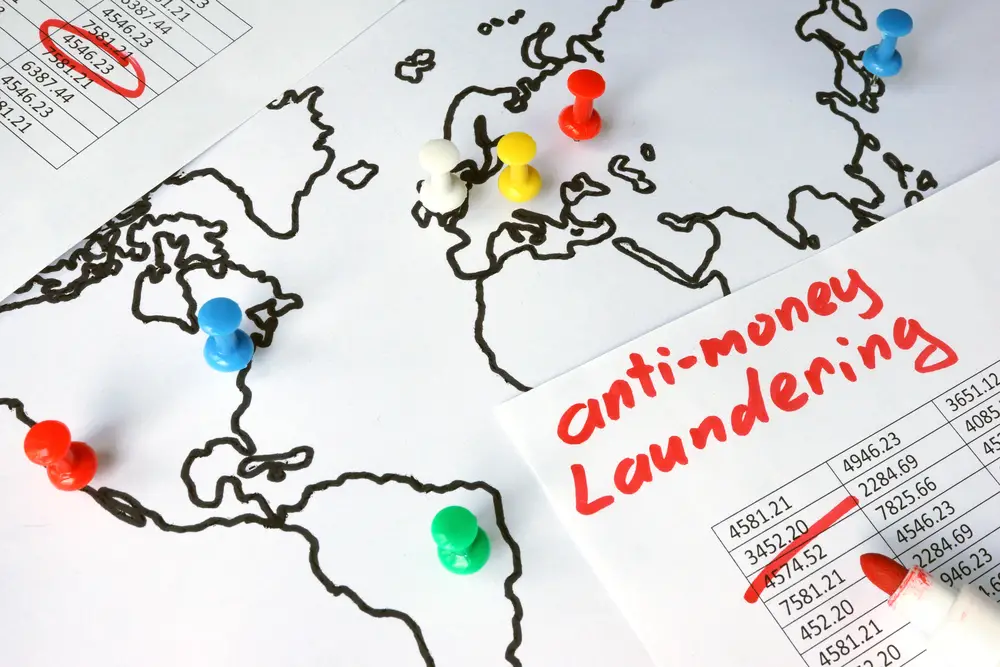Bad actors constantly find new ways to launder money, and trade-based money laundering (TBML) is no exception. TBML represents about $2 trillion of global trade. TBML is a form of money laundering that occurs when the proceeds of crime are disguised as legitimate trade transactions. In other words, criminals use the international trade system to move and hide their illicit funds.
While TBML can be difficult to detect, there are certain structural risk indicators that financial institutions can look out for.
Some common money laundering key risk indicators for TBML include:
• Products being shipped do not match the description on commercial invoices. For example, higher-value goods are declared on invoices than what is being shipped.
• Goods are shipped to and from countries known for weak controls against money laundering and terrorist financing. Goods and services money enable international trade transactions.
• Overinvoicing or under-invoicing of goods. This can be done to transfer value out of or into a country via the prices declared on commercial invoices.
• Lack of cooperation from customers during due diligence checks. For example, a customer refuses to provide information about the beneficial owner or refuses to meet in person.
• Unusual financing arrangements, such as round-tripping, where goods are shipped back and forth between two countries multiple times to inflate trade volume and generate fictitious profits.
• Sudden changes in trading patterns, such as a customer who has never traded with a particular country suddenly starting to do so frequently.
Although money is generally laundered through the banking systems and physically by money movements, the money could also be laundered through physical movements through the market. This is also known as money laundering in commerce, which is often disguised as stealing from criminals and such money laundering indices attract the financial action task force agency.
Are you a small business owner who is looking to export your products? If so, it’s important to know the risk indicators for trade-based money laundering (TBML). Knowing what to look for can help protect your business from being used as a tool for criminal activity. In this blog post, we’ll discuss some of the most common risk indicators for TBML and provide tips on how to stay safe. Stay tuned!
What is trade-based money laundering (TBML)?
The use of trade and transactions for money laundering avoids the financial transparency of the financial regulation. Techniques for falsifying documents are usually indirect. It makes it an increasingly popular technique for money laundering but difficult to trace.
According to estimates, laundered cash amounts to more than $200 billion annually in total trade. Customs fraud is a common problem around the world. In most cases, the laundered funds are sent to jurisdictions which lack financial controls.
Risk signs for trade-based money laundering
Several key risk indicators for trade-in-money laundering are identified – including a: Identify the structural risks. 2. Indicators for commodity risk, trading documents, etc. A risk indicator for account and transaction activity.

Risk indicators for trade-based money laundering
A recent report by the FATF, in conjunction with GMB, highlighted three major risks associated with the emergence of trade-linked money laundering.
While money is typically laundered through the financial system and physical cash flow, it can also be laundered through the commerce system through the physical movement of goods, known as trade-based money laundering, and it is often used to conceal criminal gains.
Recently the FATF published an analysis of the risk factors for money laundering and the alleged trade-induced laundering by Egmont. This indicator was developed using data collected from the FATF and the Egmont Group FIU in the Trade-Based Money Laundering Study.
Over- and under-invoicing of products and services
An exporter can sell value to an importer by invoices for goods and services below the cost of the products and services sold. The exporters gain value for imports by charging over the market price.
This agreement will not be made when importers agree to cooperate to transfer economic benefits to other countries. The same international trade transaction has ownership of an international trade transaction.
Falsely described products and services
The same applies to laundering money through disguising or misleading a product or service. Sometimes, an exporter sends low-cost items but falsely claims they are cheaper. Cash deposits exchange hands in complex trade deals
Over- and under-shipment of services and goods
The money laundering business can increase or decrease the volume of transportable goods or services offered to customers. Sometimes it’s not feasible to transport a shipment.
Multiple billings for goods and services
The resulting money is easily laundered when combining different bills to justify multiple charges for the same goods or services.
Types of Risk Indicators for Trade-Based Money Laundering
The Financial Action Taskforce identifies four major risks of money laundering based on trade. Those are:
Account and Transaction Activity Risk Indicators
TBML indicators of accounts and transactions risk include: A company makes a last-minute payment arrangement. Similarly, entities may redirect payment to a different entity or ask for payment amounts or dates modifications.
Trade document and commodity risk indicators
Trade documents, bills and contracting documents contain incongruities. Often the description of products is incorrect, there is an inconsistent number on invoices, or the accounting numbers do not match.
Trade activity Risk indicators
TBML indices for trading activity: The stated business does NOT match trading activities. Several manufacturers of clothing export jewelry and export metals and minerals.

Trade-based money laundering techniques
The trade-related laundering process has several methods that the FATF has defined.
Over- and under-invoicing of goods and services
An export company could pass this value on to another importer by invoicing goods and services lower than market value. In contrast, a business billed for more than market value will receive an exporter’s value. These agreements will only occur if importers and exporters agree to collaborate to transfer value. It is possible that even different companies own it.
Falsely described goods and services
Misrepresented or falsely described goods and services can also be misused for money laundering. For example, export companies might ship inexpensive items to the buyer and falsely bill them as higher-priced or completely different items.
Multiple invoices of goods and services
Several international trade transactions are facilitated using multiple invoices, enabling multiple payments for the same shipment or service.
Over- and under-shipment of goods and services
A money laundering business can overstate or underestimate the goods or services supplied. Sometimes goods are never delivered.
Conclusion
These are just a few of the many risk indicators for TBML. As trade-based money laundering becomes more prevalent, it’s important for businesses to be aware of the signs and take steps to prevent it from happening within their organizations. If you suspect that TBML is taking place, it’s important to report it to the proper authorities so that an investigation can take place.
By understanding these risk indicators, financial institutions can play a key role in the fight against TBML. If you suspect that TBML is occurring, please contact your local financial intelligence unit.

Chris Ekai is a Risk Management expert with over 10 years of experience in the field. He has a Master’s(MSc) degree in Risk Management from University of Portsmouth and is a CPA and Finance professional. He currently works as a Content Manager at Risk Publishing, writing about Enterprise Risk Management, Business Continuity Management and Project Management.

